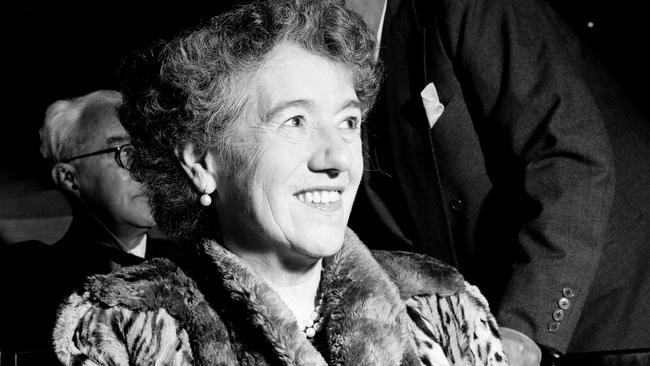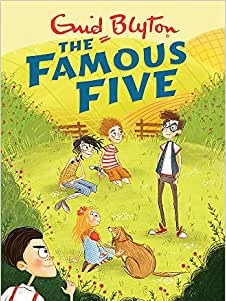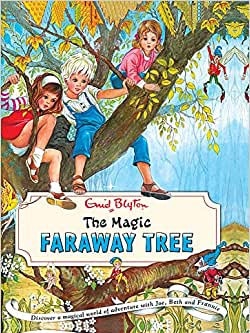Enid Blyton: an old favourite seen through a new lens
Long before positive psychology became popular — and the cancel culture mob declared her a racist — prolific children’s author Enid Blyton taught rules for living.

Enid Blyton died more than fifty years ago, and her career spanned half a century. It’s been a hundred years, then, since her first works appeared. Such distance does not always lend enchantment and to some, her work may today appear positively prelapsarian but to get heated about what she should or shouldn’t have done seems quite irrelevant.
This new book is about what Blyton did, and, as importantly, what she intended to do, as one of the world’s best writers for children.
The author, Andrew Maunder, associate dean in the School of Humanities at the University of Hertfordshire, says Blyton’s literary life “offers an unparalleled case study of literary professionalisation in the twentieth century”.
Blyton had a career, and it didn’t just happen. She managed it on a micro level, acutely aware of what was happening in both the world of children’s publishing and the society in which she was living. She was at pains to understand her readers: from fairy verse and simplified versions of familiar tales, anthropomorphised animals and adventure yarns in the Ransome tradition, she prioritised the child’s viewpoint in such an engaging fashion her children’s books sold in unprecedented numbers.
She wrote of the charms of outdoor life, the lure of the natural world. Long before positive psychology became popular, she taught rules for living and clothed them in such enthralling stories that children were steeped in possibilities. They too could be heroes. They too could get by with the help of their friends.
Maunder gives attention in his book to the productive outcome of her close relationships with her publishers, and her attention to detail. She had great appreciation for the expertise of illustrators who, like Harmsen van der Beek (often just Beek, on the covers) and Eileen Soper, are, for the first generations of Blyton’s readers, inseparable from the enjoyment of reading a good book.
She promoted her books in shops, long after sales were dependent on such exposure. But this is a balanced biography: Maunder points out that Blyton was, to some extent, a victim of her own success. Her best-selling work appeared in such quantity that it aroused suspicion that it must be deficient in quality. Unlike for example Conan Doyle and L.M. Montgomery who came to resent the characters with whom they were most identified in the public’s imagination, as her readers clamoured for more of the same, Blyton was eager to comply.

Over time, her work became an easy target, and she became defensive, vulnerable to criticism which she felt impugned her highest motives, and sensitive to being lampooned for the seriousness with which she took her social mission. No impartial observer would credit the woman who wrote The Enid Blyton Magazine, encouraging good citizenship, and who committed herself also to charitable work for the disadvantaged in her Busy Bees and Sunbeams clubs, with a cynical or venal approach to either her work or her readers, yet she had to contend with these suggestions. Maunder shows how galling it must have been, successful as she was and yet snubbed by both Penguin Books and the BBC.
In her later years, Blyton watched as children’s books by her contemporaries appeared in profusion in Puffins, the children’s arm of Penguin, while her post-war family stories, in which often she showed the cracks in the attractive facade of middle-class family life, were studiously ignored.
Maunder is scrupulously fair. He gives space to Blyton’s critics, even on occasion endorsing their opinions. He quotes Geoffrey Trease’s “valid question”: }What would happen if Miss Blyton someday stemmed the flow of her immense output and used her knack of storytelling on fresher material, about which she had given herself more time to think and feel?”

He does not skirt the tricky allegation of racism, and suggests that Blyton’s representations of Toyland in the Noddy stories over time … seemed in a strange way to appear as allegories of post-war Britain, a rapidly changing society which Blyton felt increasingly uncertain about.
I approached Enid Blyton A Literary Life with some of the excitement I remember from long ago, when I was a child, opening “another Enid Blyton”. Perhaps Maunder’s unexpected achievement is that he, too, has written an exciting book. He has covered enormous territory and produced a standard reference work, yet it is accessible to the general reader. Notes are confined to the ends of chapters, the contents page includes not just chapter headings (such as “Blyton and the Critics”, “Adventure”, “Blyton and Gender”) but under each lists the topics dealt with (such as “Blyton in Context”, “The Famous Five”, “School Stories”) and there is a useful chronology. Less useful is the first section of the bibliography titled “Works by Enid Blyton’ which includes 40 or so titles although the index lists well over 100. Serious readers confronted with any select list of her work are immediately aware of omissions. Why no The Three Golliwogs in a book which asserts that the use she makes of these toys demonstrates “her capacity for racism”? Why no The Folk of the Faraway Tree in which her conservation message reaches a kind of apotheosis when the children help save the dying tree from destructive trolls mining jewels from among its roots?
The point is, of course, that the study of a writer of such prolific and (dare I say) repetitive output requires a selective approach and Maunder does fulfil his stated aim of revealing “something of Blyton’s diversity in terms of genre, form and subject matter, thereby suggesting that she is not as easy to sum up as she first seems and is certainly more complex and thoughtful than she is given credit for being”.
Admirers of Enid Blyton should be very grateful that Maunder has devoted such a slice of his career to what must have been a demanding task – reading enough of the work to accurately assess the author and writing about it in a way which will stimulate the critic to pursue new areas of research and the reader to return to Blyton’s work with a deeper appreciation and understanding.
Judith Crabb is a retired second-hand bookseller who attributes to Enid Blyton her lifelong love affair with books and reading. This is an edited extract of an essay first published in The Enid Blyton Society Journal 77.
Enid Blyton: A
Literary Life



To join the conversation, please log in. Don't have an account? Register
Join the conversation, you are commenting as Logout